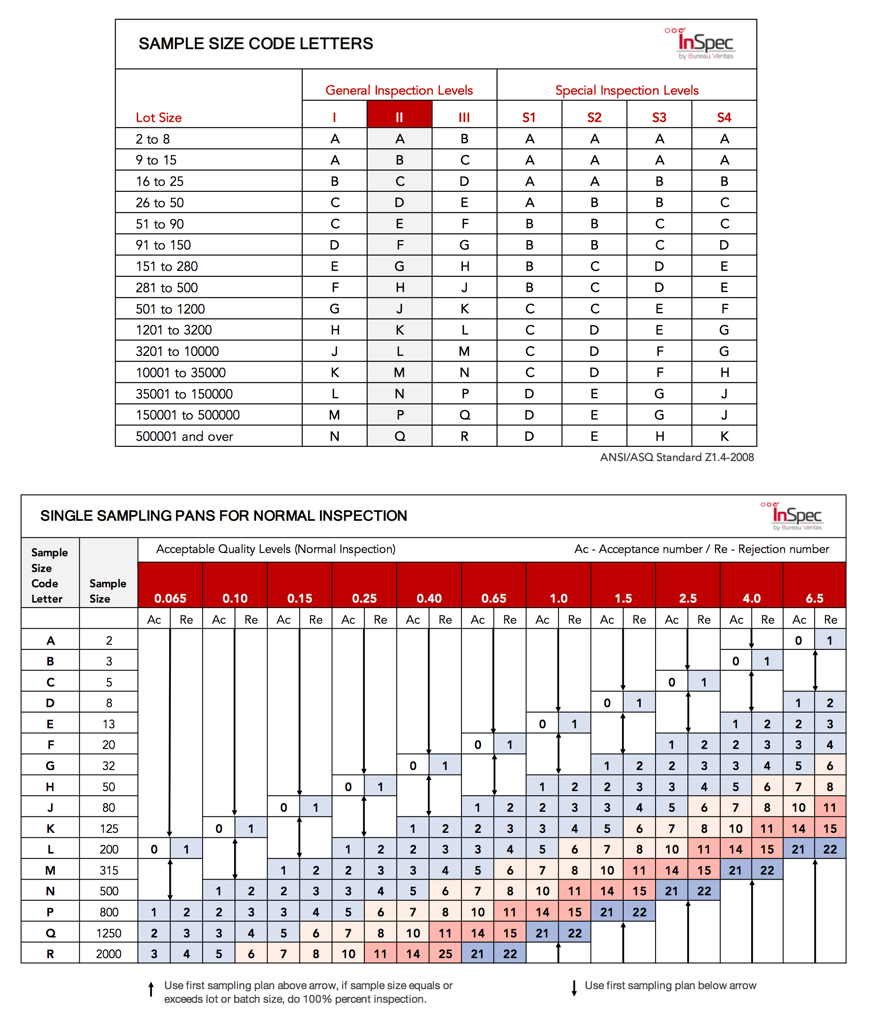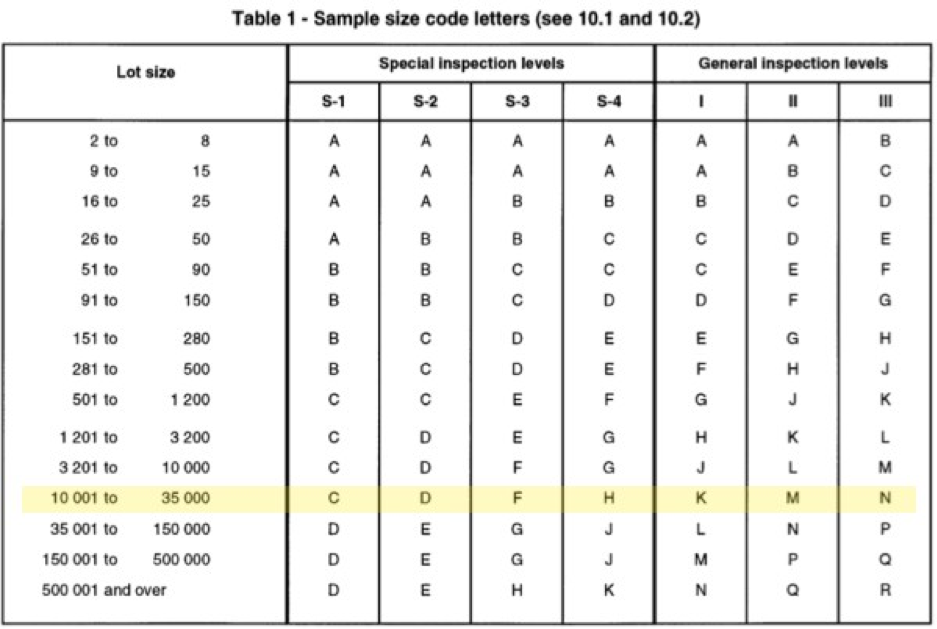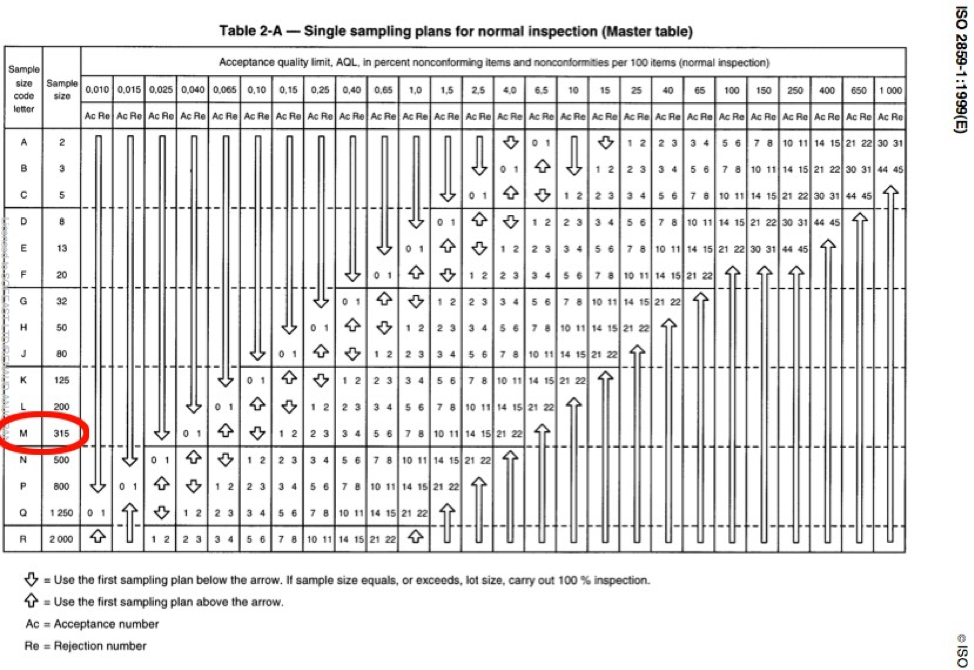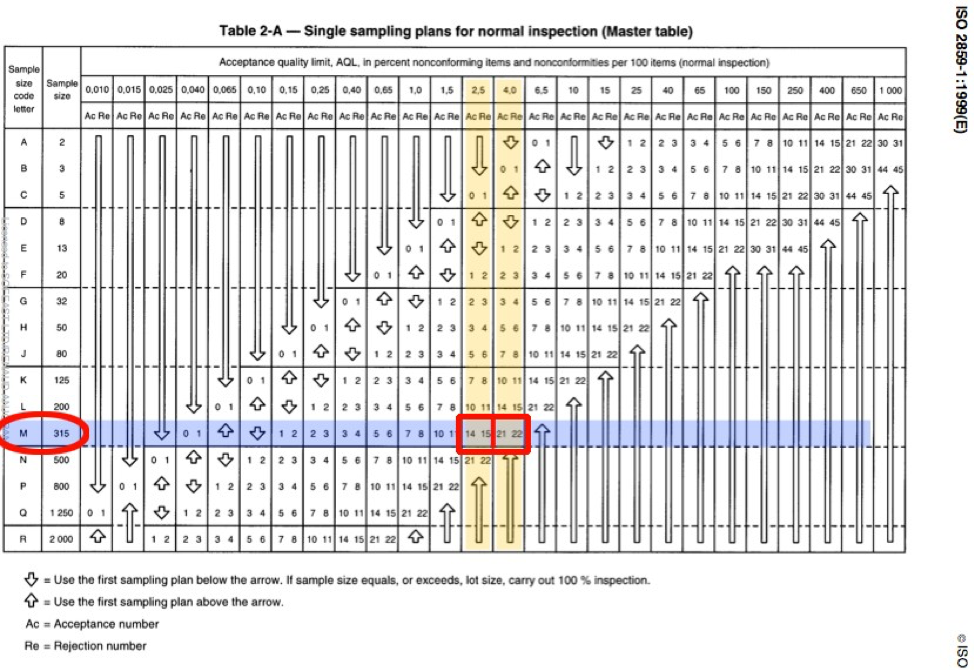 What is AQL Sampling?
What is AQL Sampling?
AQL Sampling ? short for Acceptable Quality Limit ? is a sampling method designed to help you, as a buyer, decide whether to accept or reject your order of manufactured goods. Specifically, it allows you to determine if your produced order meets the quality standards necessary for acceptance without having to test 100% of the units.
Testing 100% of a batch of manufactured products is often not practical, as it would be far too expensive or time-consuming for most buyers to inspect every single unit to ensure quality. For instance, in softline product inspection, inspected garments must often be carefully measured or fitted against models or dummies. Seam and fastener strength must also be tested. It would be unrealistic to perform this kind of testing on every single piece coming off the line.
Likewise, orders can?t simply be accepted without any quality testing, as acceptance of bad batches of products would be financially disastrous. AQL sampling allows you to make an informed and confident acceptance or rejection decision based on the inspection of a small sample of the overall order, utilizing sample sizes and acceptance rates based on internationally recognized and accepted ISO standards.
The acceptable quality limit represents the maximum number of defective units that can be present in an inspected example, beyond which the entire batch must be rejected. That makes the criteria for acceptance or rejection clear cut and easy to understand, a major benefit of the AQL system.
AQL also allows for different standards to be set for different levels of defects, ensuring that products with significant defects aren?t allowed to make it off the line, but also that entire batches aren?t scrapped over relatively minor problems.
The levels of defect generally used for most consumer goods are critical, major, and minor. Critical defects are defects that are absolutely unacceptable, such as those that might cause harm to an end user or fail to adhere to regulations. Major defects are problems that would make the product unacceptable to the end user. Minor defects are imperfections that deviate from specifications, but that end users would generally be willing to accept.
For consumer goods, buyers normally set AQL limits of 0% for critical defects, 2.5% for major defects, and 4.0% for minor defects. These numbers aren?t set in stone, and can be adjusted as desired depending on the type of product or relationship between the buyer and manufacturer. Consumer electronics, for instance, often have the major defect AQL reduced to 1.5%, or AQL 1.5.
Once you?ve determined your desired AQLs, you?re ready to use AQL tables to determine how many pieces need to be pulled from your order for inspection, and how many of those inspected pieces can be accepted as defective.
What Are AQL Tables?
 Figure 1 a? AQL tables / charts
Figure 1 a? AQL tables / charts
AQL tables are a set of charts designed to allow users to easily determine the number of samples necessary for quality testing, as well as the number of allowable defective units based on a given AQL. These tables are part of ISO 2859, and have equivalents in all national and international standardization organizations, including ANSI. Once an AQL has been determined, the charts make it easy for the buyer and manufacturer to come to an agreement on quality inspection standards.
Whether doing quality control and testing in-house or outsourcing the job to a firm like Bureau Veritas, these tables make it simple for companies to determine the exact parameters necessary to properly inspect and verify the quality of an order prior to acceptance and shipping.
Using AQL Charts
While there are quick and easy AQL calculators that will provide sample sizes and allowable defect numbers without the need to use AQL tables, it?s important to understand how the numbers are arrived at and how to use the charts manually. Below is an example case describing how to read and interpret the AQL tables.
Example: A company has ordered 15,000 one-piece swimsuits from a clothing manufacturer in China. They are all to be produced in a single batch, and the buyer and producer have agreed to AQL 0.0 for critical defects, AQL 2.5 for major defects, and AQL 4.0 for minor defects.
Based on that information, how many samples does the buyer require the manufacturer to pull for inspection, and how many of those samples can be defective before a rejection decision is triggered?
Step One: Find the row that corresponds to the total lot size. In this case, the total lot size is 15,000, so the appropriate row is the 10,001 to 35,000 row.

Step Two: Determine the appropriate inspection level and find the corresponding column.
For most consumer products, the correct inspection level is general inspection level II, which is ?normal severity?.

Step Three: Find the intersection to determine the sample size code letter.
In this case, the appropriate row and column intersect at the letter M, which is the correct sample size code letter to carry over to the second chart ? table 2-A for single sample plans. In this example, we?ll use table 2-A (below at Step Four), assuming a single sampling plan.
Step Four: Carry the sample size code letter over to table 2-A to determine the correct sample size for inspection.
In this example, the sample size code letter is M, which table 2-A shows corresponds to a sample size of 315. The manufacturer should therefore pull 315 units from the batch for quality inspection.
 Table 2-A ? Single sampling plans for normal inspection (Master Table)
Table 2-A ? Single sampling plans for normal inspection (Master Table)
Step Five: Determine the number of allowable defects for the specified AQLs.
In this example, the AQL for critical defects is 0%, meaning a single unit found to have a critical defect results in a rejection of the entire batch. To determine the number of allowable major and minor defects, follow the appropriate sample size code letter row and find the intersection with the appropriate AQL columns.

In this example, following the M row to the intersection with the 2.5% column shows the numbers 14 and 15. The lower number, 14, is the maximum number of allowable defects that will result in acceptance. If 14 or less major defects are found among the sample, the batch is accepted. If 15 or more major defects are found, the entire batch is rejected.
Likewise, the intersection of row M and the 4.0% column shows 21 and 22, meaning 21 or less minor defects will result in acceptance off the entire batch, and 22 or greater minor defects will result in rejection.
Making AQL Sampling and Product Inspection Easy with Inspec by BV
Regardless of the type of product coming off the line, defects in manufactured goods are a threat to not only your profit margins but potentially even the safety of your end users. AQL sampling is a straightforward, practical, and effective way to perform quality assurance on an order of manufactured goods so that you can ensure those threats are eliminated prior to accepting an order.
With over 190 years of experience, Bureau Veritas is the global leader in testing, inspection, and certification. Our experience and customer-focused approach make us the perfect partner for businesses looking to ensure quality and safety in their manufactured products. Our newest quality management platform, Inspec by BV, is designed to support all stages of your sourcing projects, from product inspections, to factory audits, to lab testing, and more.
Whether you?re new to sourcing or have decades of experience importing manufactured goods, Inspec by BV is ready to help ensure that the products that wind up in the hands of your end consumers are of the highest quality and the highest safety possible.


